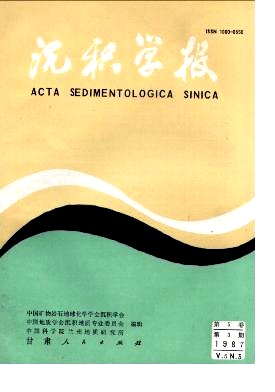DISCOVERY AND STUDY OF CARBONIFEROUS DEEP-WATER SEDIMENTS IN THE NORTHWEST BORDER OF JUNGGAR BASIN, XINJIANG
- Publish Date: 1987-09-10
Abstract: The sedimentary environment of Carboniferous in the northwest border of Junggar Basin is regarded as a shallow-sea by preceding scientists. However, many deep-water in indicators including gravity flow have been found recently by the authors in the Carboniferous stratum of this area, thus an objection to the preceding conclusion is raised. According to incompletely-emerged profiles, the total thickness of Carboniferous sediments in the study area is about 5000-7000 meters and they are mainly a set of clastic sediments. In the early period of Early Carboniferous, transgression happened on the basis of the Devonian terrestrial sedimentation in the north-border region of the Aerjiatishan Mountain and the sedimentary sequence of shallow-sea tempestite was formed with the increase of sea level. In the middle-late period of Early Carboniferous, a set of thick clastic flysch facics generated by turbidity current, 1631-4574 meters in thickness, was taking shape in the Zhayier Mountain region, The proximal turbidite and contourite with the developed A and B sections of the Bouma sequence as well as the debris flow deposit were found in this flysch facies, and various deep-water indicators, including deep-water trace fossils and deep-water siliceous radiolaria, were also discovered, for example, Taphrhelminthopsis sp. in the subface of turbidite sandstones and Scolecocoprus sp, attached on the bedding surface of black mudstones. Middle Carboniferous sediments, 2300 meters in thichness, outcrop completely in the Halaalate Mountain region and shallow-layer turbidites are well developed upwards and downwards, especially in the lower section. They are composed o the B-E or C-E sections of the Bouma sequence. The siltstones In the C section are rich in trace fossil, Zoophycos, while in the mudstones of the E section are abundant siliceous radiolaria. In addition, on the bedding surface, such associations of deep-sea trace fossils have been found, such as Cosmorhaphe sp. Scolarituba sp. hetminthoida Labyrinthica, Scolecocoprus sp, etc. However, in the middle part of this series, grain sizebecomes-sharply coarse and this bed is composed of gravel-bearing coarse sandstones and coarse-grain graywackes. It is apparently charactized by the proximal turbidite and fluxoturbidite and forms a complete prograding sequence of turbidite fan with the thin-layer turbidite in the lower section. The regession of Upper Carboniferous appeared in a shallow-sea environment.
| Citation: | Jin Hujuan, Li Yuci, Li Juying. DISCOVERY AND STUDY OF CARBONIFEROUS DEEP-WATER SEDIMENTS IN THE NORTHWEST BORDER OF JUNGGAR BASIN, XINJIANG[J]. Acta Sedimentologica Sinica, 1987, 5(3): 125-134. |






 DownLoad:
DownLoad: